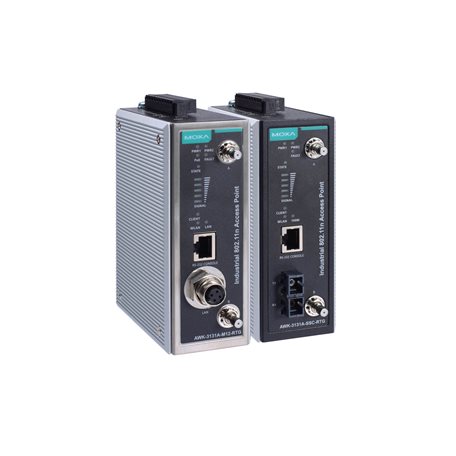
Click “WhatsApp Us” or “Get a Quote” above to buy AWK-3131A-RTG from APulsar Technologies, MOXA official distributor.
In stock. Purchase walk-in from our office in Petaling Jaya, or order online and enjoy fast delivery across Kuala Lumpur and the entire Malaysia.
The AWK-3131A-RTG 2-in-1 industrial AP/client devices are designed specifically for train-to-ground communication and can perform reliably even when the trains reach a speed of 120 km/h. The AWK-3131A-RTG complies with a portion of EN 50155 specifications, covering operating temperature, power input voltage, surge, ESD, and vibration, making the AWK-3131A-RTG suitable for a variety of industrial applications. Installation is easy, with either DIN-rail mounting or distribution boxes, and the DIN-rail mounting capability, wide operating temperature range, and IP30 housing with LED indicators make the AWK-3131A-RTG a convenient yet reliable solution for any rolling stock application.
| 100BaseFX | |
| Wavelength | 1310 nm |
| Max. TX | 0 dBm |
| Min. TX | -5 dBm |
| RX Sensitivity | -34 dBm |
| Link Budget | 29 dB |
| Typical Distance | 40 km |
*PoE is only available for the AWK-3131A-M12-RTG
Apulsar.com uses cookies to ensure you get the best experience. By continuing to browse, you agree to our use of cookies. Our privacy policy available here